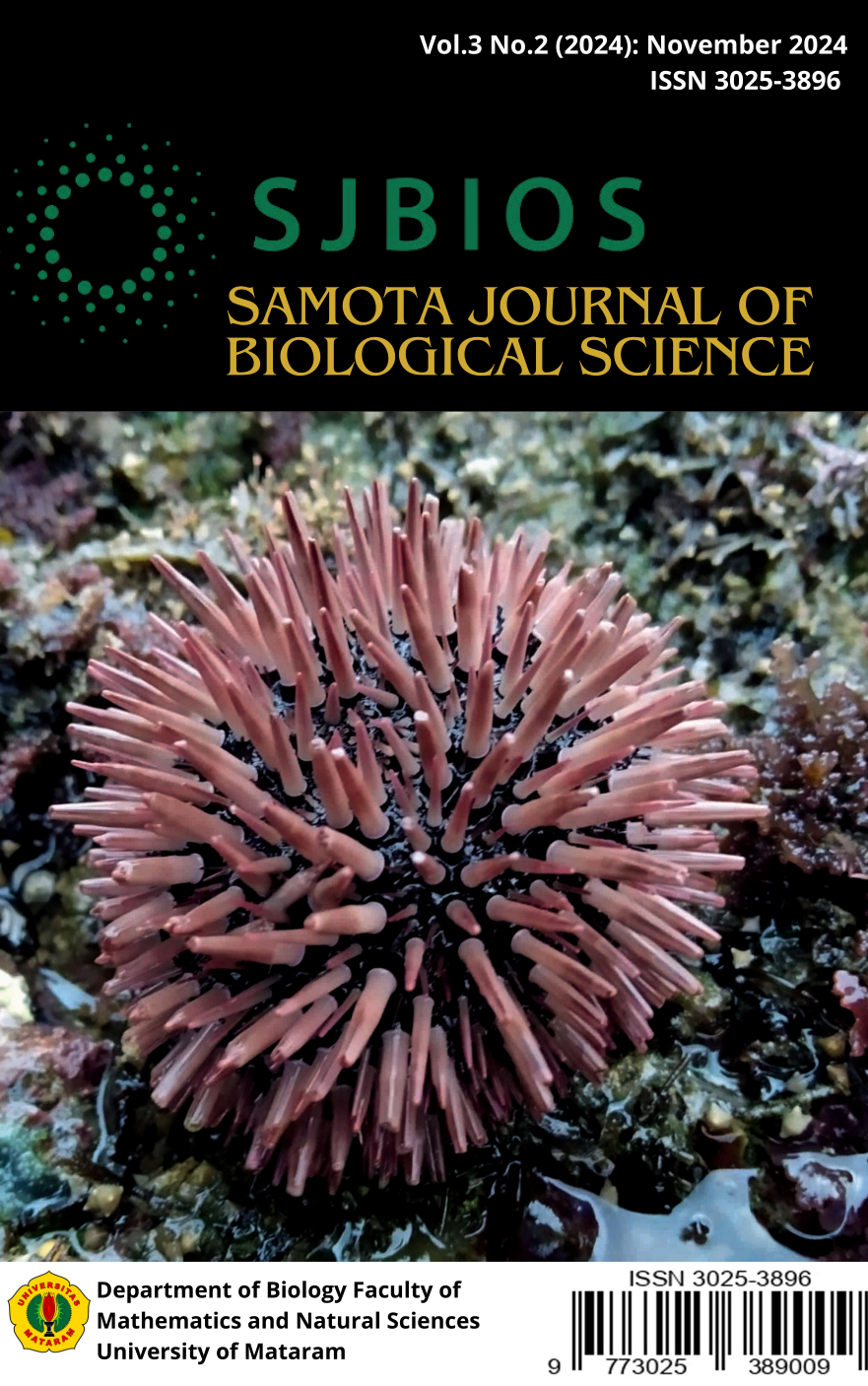Chrysin's Potential as an Anticancer: A Review
DOI:
https://doi.org/10.29303/sjbios.v3i2.5812Keywords:
Chrysin, Anticancer, Cell lineAbstract
Cancer is a disease with a high mortality rate both globally and in Indonesia. It is a chronic disease due to its long-term effects, and it can affect people of all ages, genders, and races. Currently, compounds with potential anticancer properties are being developed, and one such compound is Chrysin. Chrysin is a flavonoid compound with pharmacological benefits. It acts as an antioxidant and free radical scavenger. Chrysin is found in honey, passion fruit, olive oil, tea, red wine, and propolis. Research shows that Chrysin has anticancer potential in cell lines such as TNBC, A375, CT-26, Hela, MCF-7, Hepatoma cell, ES2, OV90, B16-F1, 4T1, HTh7, KAT18, HCC, PC-3, and DU145 by inhibiting cell proliferation and inducing apoptosis. Chrysin can be utilized as a single dose or in combination to achieve synergistic effects based on dosage dependent manner.
Downloads
Published
Issue
Section
License
Copyright (c) 2024 Widie Kemala Hapsari, Ardiyas Robi Saputra

This work is licensed under a Creative Commons Attribution-NonCommercial 4.0 International License.




















